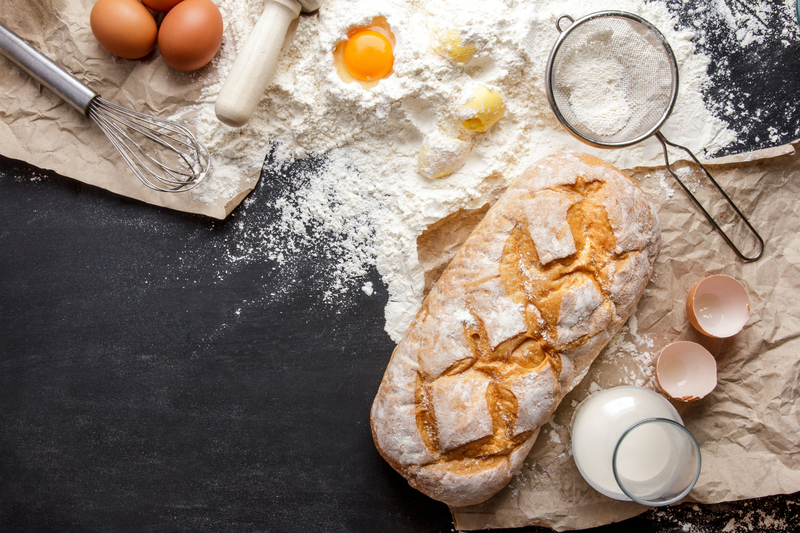 When it comes to baking bread, precision is key.
When it comes to baking bread, precision is key.
Every aspect of the process, from selecting the ingredients to kneading the dough and shaping the loaf, contributes to the final result.
One crucial decision bakers often face is the choice of oven temperature.
In this article, we will explore the debate of whether to bake bread at 425 degrees Fahrenheit (218 degrees Celsius) or 450 degrees Fahrenheit (232 degrees Celsius).
Each temperature has its merits, and understanding when to use each can make a significant difference in your bread-baking success.
The Role of Temperature in Bread Baking
Before delving into the specific temperatures, it’s important to understand the role of temperature in bread baking.
The heat from the oven transforms the dough in several ways:
- Yeast Activation
Yeast is a critical ingredient in bread baking.
It is responsible for fermentation, which produces carbon dioxide gas and causes the dough to rise.
Temperature affects yeast activity; higher temperatures encourage faster fermentation, while lower temperatures slow it down.
- Crust Formation
The oven temperature determines the rate at which the crust forms on the bread.
A higher temperature results in a faster and more robust crust development, while a lower temperature leads to a thinner and softer crust.
- Interior Texture
Temperature also influences the interior texture of the bread.
Higher temperatures tend to produce bread with larger air pockets and a slightly different crumb structure compared to lower temperatures.
When to Bake at 425 Degrees Fahrenheit
 Now that we’ve covered the basics, let’s explore when it’s appropriate to bake bread at 425 degrees Fahrenheit:
Now that we’ve covered the basics, let’s explore when it’s appropriate to bake bread at 425 degrees Fahrenheit:
- Lean Bread Dough
Bread recipes that use lean dough, which contains only the basic ingredients of flour, water, salt, and yeast, often benefit from a 425-degree bake.
These breads, like baguettes and rustic boules, require a slightly cooler oven to allow for a longer bake time.
This produces a crusty exterior and an open crumb structure.
- Longer Fermentation
If you’re employing a longer fermentation process, such as a sourdough starter or preferment, a lower baking temperature can complement the slow fermentation.
This ensures that the bread bakes evenly and doesn’t develop an overly thick crust before the interior is fully cooked.
- Specialty Breads
Certain specialty breads, like focaccia and flatbreads, are traditionally baked at 425 degrees Fahrenheit.
This temperature allows for a crisp but not overly thick crust while preserving the unique characteristics of these bread varieties.
When to Bake at 450 Degrees Fahrenheit
Now, let’s discuss when it’s advisable to use a higher baking temperature of 450 degrees Fahrenheit:
- Enriched Dough
Bread recipes that include additional ingredients like butter, sugar, eggs, or milk, known as enriched dough, often benefit from a higher baking temperature.
The increased heat helps to set the crust quickly, preventing the bread from becoming too dense due to the added moisture.
- Shorter Bake Time
If you’re looking for a quicker bake, perhaps due to time constraints, a higher temperature can expedite the process.
Bread baked at 450 degrees Fahrenheit typically requires a shorter baking time, making it a convenient choice for busy bakers.
- Artisan Loaves
Artisan bread, which often has a higher hydration level and a unique flavor profile, can benefit from a hot oven.
The high temperature promotes oven spring, resulting in a well-risen loaf with a crisp crust and open crumb.
Bottom Line – Do You Bake Bread at 425 or 450?
 In the world of bread baking, the choice between 425 degrees Fahrenheit and 450 degrees Fahrenheit is not a matter of right or wrong but rather a matter of matching the temperature to the specific bread recipe and desired outcome.
In the world of bread baking, the choice between 425 degrees Fahrenheit and 450 degrees Fahrenheit is not a matter of right or wrong but rather a matter of matching the temperature to the specific bread recipe and desired outcome.
Understanding the role of temperature in the baking process and considering the characteristics of your dough will help you make an informed decision.
Experimentation and practice will further refine your skills, allowing you to create delicious bread that suits your preferences.
Whether you opt for the lower or higher temperature, one thing is certain: the aroma of freshly baked bread will always be a delight.


